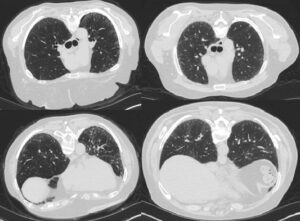Statin Use Tied to Reduced Mortality Rate in Older Adults

U.S. veterans aged 75 years or older who were prescribed statins had a 25 percent lower risk of death than their counterparts, according to a retrospective cohort study led by investigators from Brigham and Women’s Hospital and the VA Boston Healthcare System. The analysis also found the risk of dying from a cardiovascular event, such as a heart attack or stroke, was lower by 20 percent among veterans treated with statins.

 What is the role of microRNAs in glioblastoma (GBM)? How do they control the epigenetic landscape of the tumor and its microenvironment? Questions like these are at the heart of the research of
What is the role of microRNAs in glioblastoma (GBM)? How do they control the epigenetic landscape of the tumor and its microenvironment? Questions like these are at the heart of the research of 
 Engineered cellular treatments like chimeric antigen receptor
Engineered cellular treatments like chimeric antigen receptor 



